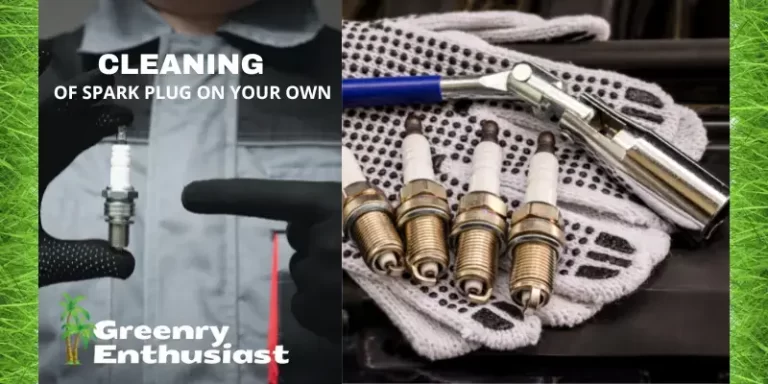Where is the carburetor on a Lawn Mower? A 2024 Beginner’s Guide
Discovering the intricacies of a lawn mower might not be everyone’s idea of a weekend adventure, but for those who like to get the most out of their garden equipment, understanding the basics can save time, money, and a lot of frustration.
One component that often confuses is the carburetor. Let us examine this vital component in more detail to ensure your lawn mower engine functions as smoothly as it did the day you purchased it.
Why the Carburetor Matters in Lawn Mowers
Why does the carburetor matter so much? Think of it as the chef in a restaurant, carefully mixing ingredients (in this case, air and fuel) to create the perfect dish for the lawn mower engine. If the mix is off, the lawn mower engine either won’t start or will perform poorly. A well-maintained carburetor ensures your lawn mower operates efficiently, saving fuel, reducing emissions, and prolonging the life of your engine.
How to Locate the Carburetor on Different Types of Lawn Mowers
Push Mowers
On push mowers, the carburetor is almost always under the air filter cover on the engine’s side. You’ll recognize it by its metal body and the tubes connecting it to other engine parts. It’s typically mounted with screws or bolts, making the lawn mower carburetor relatively easy to identify and access.
Riding Mowers
With their more complex designs, riding mowers usually house the carburetor under the hood, in front of, or sometimes slightly below, the engine. You may need to open the hood and remove a protective casing or shroud to find it. The carburetor in these models is larger and more complex, reflecting the engine’s increased power requirements.
Zero-Turn Mowers
The carburetor’s location is similar to riding mowers for zero-turn mowers but often with easier access due to the mower’s design, which prioritizes maintenance convenience. Look for it in the engine bay; it is usually visible once the main cover is removed.
Important Safety Note: Always ensure the mower is off, the spark plug is disconnected, and the engine is cool before attempting to locate or touch the carburetor to avoid any risk of injury.
Identifying the Carburetor and Its Parts
A closer look at the lawn mower carburetor reveals several critical components:
Air Filter Housing: Acts as the lungs of the engine, ensuring that clean air is mixed with fuel.
Throttle Plate: Controls the amount of air entering the carburetor, thereby regulating engine speed.
Choke Valve: Aids in starting the engine by enriching the fuel mixture, especially useful in colder temperatures.
Fuel Inlet: Where fuel enters the carburetor from the tank.
Float Chamber: Maintains consistent fuel levels to ensure proper mixing at all times.
Main Jet and Idle Jet: These are responsible for metering the precise amount of fuel mixed with air under various operating conditions.
Identifying problems with the lawn mower carburetor can be as simple as noticing the engine’s difficulty in starting, uneven running, or unexpected stops. These issues often stem from blockages or maladjustments within the carburetor.
Accessing and Maintaining the Carburetor
Accessing the carburetor is the first step for most maintenance tasks, including cleaning or replacing parts. Here’s a detailed approach:
Preparation: Ensure the lawn mower is on a flat surface, the ignition is off, and the spark plug wire is disconnected.
Remove the Air Filter Cover: This is usually secured with a screw or clip and provides the first layer of access.
Disconnect the Fuel Line: Have a container ready to catch any fuel that may spill out. Clamping the fuel line first is a good idea to minimize fuel loss.
Unbolt the Carburetor: Carefully unscrew the mounting bolts. Note the arrangement of any gaskets or seals for reassembly.
Tools and Materials:
Besides basic hand tools like screwdrivers and wrenches, consider having carburetor cleaner, new gaskets, and possibly carburetor repair kits on hand. Wearing gloves can protect your hands from fuel and grime, especially when handling lawn mower carburetor components.
Cleaning Tips:
- Use a carburetor-specific cleaner spray to remove deposits.
- Avoid using wire or sharp objects on the jets and other openings to prevent damage.
- After cleaning, ensure all parts are dry and debris-free before reassembly.
Frequently Asked Questions (FAQs)
Where is the carburetor located on a lawn mower?
The carburetor on a lawn mower is typically located behind the air filter and on top of the engine.
How do I find the carburetor on a walk-behind mower?
To find the carburetor on a walk-behind mower, you must remove the air filter housing and locate it on the side or top of the engine.
Why is the carburetor important for a lawn mower’s engine?
The carburetor is an essential component of a lawn mower’s engine as it mixes fuel and air to create the combustion necessary for the engine to run.
What are some common carburetor problems to look out for?
Some common carburetor problems include a dirty carburetor, the need for cleaning or repairs, or the need to replace the carburetor with a new one.
How do I clean the carburetor on my lawn mower?
To clean the carburetor on your lawn mower, remove it from the engine and use a carburetor cleaner or a cleaning kit to remove any dirt or debris.
When should I replace the carburetor on my mower?
You may need to replace the carburetor on your mower if it is beyond repair, causing persistent issues, or not functioning properly despite cleaning.
Why is the air filter important in relation to the carburetor?
The air filter helps remove dirt and debris from the carburetor, preventing clogs and ensuring clean air intake for proper fuel combustion.
Conclusion
Finding and maintaining the carburetor on your lawn mower doesn’t have to be a daunting task. With some know-how and the right tools, you can ensure your mower runs smoothly for years, whether it’s a self-propelled mower or a riding lawn model. Regular maintenance is key to preventing most carburetor-related issues.

About Naveed A Hashmi
In my childhood, I used to see my parents while working in the land, for these reasons today I have been serving the same as our own tradition and culture. I thus love to stay in it, because I want to learn something advanced and new so that I may improve my farm’s contour and help others with my experience.







